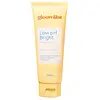What's inside
What's inside
 Key Ingredients
Key Ingredients

 Benefits
Benefits

 Concerns
Concerns

 Ingredients Side-by-side
Ingredients Side-by-side

Water
Skin ConditioningCocamidopropyl Betaine
CleansingGlycerin
HumectantPotassium Cocoyl Glycinate
Acrylates Copolymer
Niacinamide
SmoothingPEG-150 Distearate
EmulsifyingPotassium Cocoate
EmulsifyingTriethanolamine
BufferingCentella Asiatica Extract
CleansingPropylene Glycol
HumectantCamellia Sinensis Leaf Extract
AntimicrobialStearic Acid
Cleansing1,2-Hexanediol
Skin ConditioningCitric Acid
BufferingParfum
MaskingPhenoxyethanol
PreservativePotassium Sorbate
PreservativeSodium Benzoate
MaskingWater, Cocamidopropyl Betaine, Glycerin, Potassium Cocoyl Glycinate, Acrylates Copolymer, Niacinamide, PEG-150 Distearate, Potassium Cocoate, Triethanolamine, Centella Asiatica Extract, Propylene Glycol, Camellia Sinensis Leaf Extract, Stearic Acid, 1,2-Hexanediol, Citric Acid, Parfum, Phenoxyethanol, Potassium Sorbate, Sodium Benzoate
Water
Skin ConditioningGlycerin
HumectantCoco-Betaine
CleansingMorinda Citrifolia Fruit Extract
Skin ConditioningPentylene Glycol
Skin ConditioningXanthan Gum
EmulsifyingSodium Chloride
MaskingCoco-Glucoside
CleansingGlyceryl Caprylate
EmollientCaprylyl Glycol
EmollientDecyl Glucoside
CleansingBetaine
HumectantButylene Glycol
HumectantBisabolol
MaskingSodium Cocoyl Isethionate
Cleansing1,2-Hexanediol
Skin ConditioningDisodium EDTA
Anthemis Nobilis Flower Extract
MaskingCitric Acid
BufferingQuillaja Saponaria Bark Extract
CleansingEthylhexylglycerin
Skin ConditioningAllantoin
Skin ConditioningCaffeine
Skin ConditioningCaprylic/Capric Triglyceride
MaskingLeuconostoc/Radish Root Ferment Filtrate
AntimicrobialLactobacillus/Soybean Ferment Extract
Skin ConditioningLactobacillus Ferment
Skin ConditioningLactobacillus/Acerola Cherry Ferment
Skin ProtectingLactococcus Ferment
Skin ConditioningBifida Ferment Filtrate
Skin ConditioningLactococcus Ferment Lysate
Skin ConditioningLactobacillus/Punica Granatum Fruit Ferment Extract
Skin ConditioningLactobacillus Ferment Lysate
Skin ConditioningHydrogenated Lecithin
EmulsifyingCeramide NP
Skin ConditioningWater, Glycerin, Coco-Betaine, Morinda Citrifolia Fruit Extract, Pentylene Glycol, Xanthan Gum, Sodium Chloride, Coco-Glucoside, Glyceryl Caprylate, Caprylyl Glycol, Decyl Glucoside, Betaine, Butylene Glycol, Bisabolol, Sodium Cocoyl Isethionate, 1,2-Hexanediol, Disodium EDTA, Anthemis Nobilis Flower Extract, Citric Acid, Quillaja Saponaria Bark Extract, Ethylhexylglycerin, Allantoin, Caffeine, Caprylic/Capric Triglyceride, Leuconostoc/Radish Root Ferment Filtrate, Lactobacillus/Soybean Ferment Extract, Lactobacillus Ferment, Lactobacillus/Acerola Cherry Ferment, Lactococcus Ferment, Bifida Ferment Filtrate, Lactococcus Ferment Lysate, Lactobacillus/Punica Granatum Fruit Ferment Extract, Lactobacillus Ferment Lysate, Hydrogenated Lecithin, Ceramide NP
 Reviews
Reviews

Ingredients Explained
These ingredients are found in both products.
Ingredients higher up in an ingredient list are typically present in a larger amount.
1,2-Hexanediol is a synthetic liquid and another multi-functional powerhouse.
It is a:
- Humectant, drawing moisture into the skin
- Emollient, helping to soften skin
- Solvent, dispersing and stabilizing formulas
- Preservative booster, enhancing the antimicrobial activity of other preservatives
Citric Acid is an alpha hydroxy acid (AHA) naturally found in citrus fruits like oranges, lemons, and limes.
Like other AHAs, citric acid can exfoliate skin by breaking down the bonds that hold dead skin cells together. This helps reveal smoother and brighter skin underneath.
However, this exfoliating effect only happens at high concentrations (20%) which can be hard to find in cosmetic products.
Due to this, citric acid is usually included in small amounts as a pH adjuster. This helps keep products slightly more acidic and compatible with skin's natural pH.
In skincare formulas, citric acid can:
While it can provide some skin benefits, research shows lactic acid and glycolic acid are generally more effective and less irritating exfoliants.
Most citric acid used in skincare today is made by fermenting sugars (usually from molasses). This synthetic version is identical to the natural citrus form but easier to stabilize and use in formulations.
Read more about some other popular AHA's here:
Learn more about Citric AcidGlycerin is already naturally found in your skin. It helps moisturize and protect your skin.
A study from 2016 found glycerin to be more effective as a humectant than AHAs and hyaluronic acid.
As a humectant, it helps the skin stay hydrated by pulling moisture to your skin. The low molecular weight of glycerin allows it to pull moisture into the deeper layers of your skin.
Hydrated skin improves your skin barrier; Your skin barrier helps protect against irritants and bacteria.
Glycerin has also been found to have antimicrobial and antiviral properties. Due to these properties, glycerin is often used in wound and burn treatments.
In cosmetics, glycerin is usually derived from plants such as soybean or palm. However, it can also be sourced from animals, such as tallow or animal fat.
This ingredient is organic, colorless, odorless, and non-toxic.
Glycerin is the name for this ingredient in American English. British English uses Glycerol/Glycerine.
Learn more about GlycerinWater. It's the most common cosmetic ingredient of all. You'll usually see it at the top of ingredient lists, meaning that it makes up the largest part of the product.
So why is it so popular? Water most often acts as a solvent - this means that it helps dissolve other ingredients into the formulation.
You'll also recognize water as that liquid we all need to stay alive. If you see this, drink a glass of water. Stay hydrated!
Learn more about Water